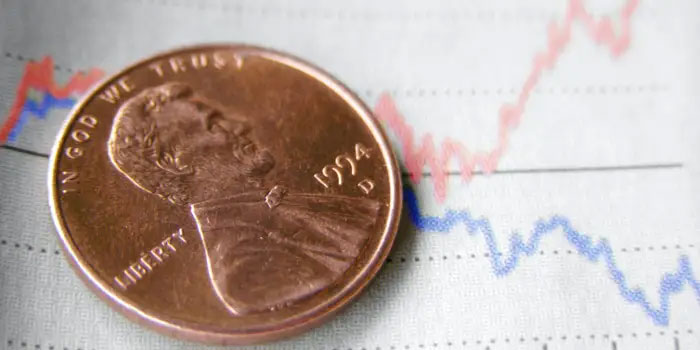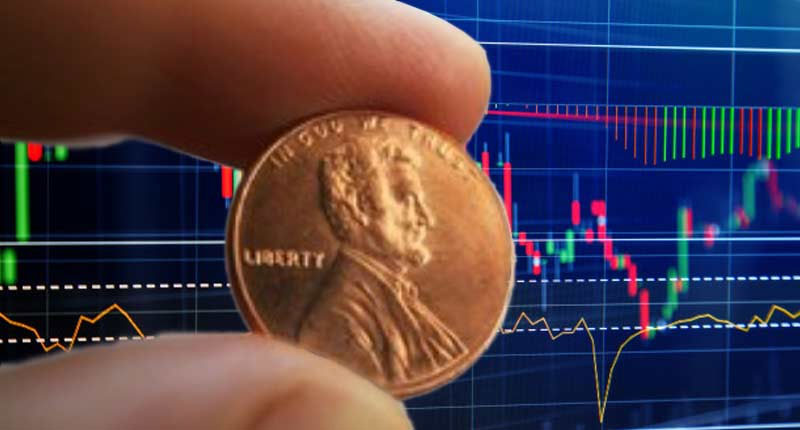Trading Volatile Stocks With Technical Indicators
Sep 02, 2022 By Triston Martin
Introduction
When the price of an asset breaks out past key chart levels of support and resistance, it signals a change in the prevailing trend. The true average range (ATR) is a technical indicator that measures the average daily range of a security's price action inside a candlestick chart. An increase in the ATR can serve as an early warning system for traders since it typically indicates that a big price movement is occurring and a breakout is imminent.
You can see numerous possible volatility breakout trades on the one-hour time frame of the gold chart below. Our trading software now incorporates a simple moving average with a 20-period time frame for the ATR, drawing attention to price movement significantly different from the norm. The only time there is an opportunity to trade is when the ATR rises over the SMA. Better opportunities present themselves when the price makes a decisive move above or below recent swing highs or lows. In this way, false crossings of the ATR above or below the moving average can be eliminated when the price does not noticeably react.
Volatility Trading Indicators
Price action is also measured by its historical volatility. The EUR/USD chart below includes the technical indicator indicated. An indicator of potential future events, implied volatility looks into the future and makes predictions. An interest rate announcement from the Federal Reserve or the Bank of England, for instance, is guaranteed to boost price movement and volatility in the foreign exchange market, even though historical volatility has been low. The options market, where put and call options are traded, is the source of implied volatility.
Another indicator that considers price movement and volatility is the Relative Volatility Index (RVI). If you look at the EUR/USD chart below, you'll see that it's the bottom indicator. Volatility increases when the indicator is more than 50. When the indicator falls below 50, it indicates a downward trend in volatility. Therefore, a purchase signal is further validated if the indicator is above or passes 50 after the buy signal has occurred. A sell signal is strengthened if the indicator is below or has passed below 50. Although it is not dependable as an indicator, it can be used to verify entries in tandem with other methods.

CBOE Volatility Index
When measuring market uncertainty, the Cboe Volatility Index is among the most followed indices. The VIX index, calculated using an option-pricing technique and has the ticker symbol "VIX," tracks the implied or predicted volatility that is priced into a strip of short-term S&P 500 Index options and is updated continuously throughout the trading day. Major institutions dominate S&P Index options trading. Therefore other traders look to their expectations for market volatility (as measured by VIX) to help inform their own.
The majority of the time, the Cboe Volatility Index is between 12 and 35, yet it has plummeted into the single digits and risen to more than 75. Increased volatility is indicated by a VIX number above 30, whereas a VIX value indicates low volatility in the teen range. Options and futures contracts based on the VIX are very liquid markets. The volatility index is also used as the basis for leveraged exchange-traded funds such as the ProShares Ultra VIX Short-Term Futures ETF (UVXY) and its counterpart, the ProShares Short VIX Short-Term Futures ETF (SVXY).
Bollinger Bands
Another key indicator, Bollinger Bands, consists of two lines or bands every two standard deviations above and below the 20-day moving average. If volatility increases, as indicated by wider bands, then volatility decreases, as indicated by narrower bands. Similar to the ATR, Bollinger Bands® can be used on any stock or commodities chart.
How to Find the Most Volatile Stocks
It is not difficult or time-consuming to identify the most volatile stocks. Instead, it would help if you did a stock screen to identify volatile stocks. When dealing with highly speculative companies, volume is crucial for smooth entry and exit decisions. As an illustration of a filter that can be used to keep tabs on highly volatile equities, consider Stock Fetcher.
Using the criteria above, Stock Fetcher will select equities that have experienced daily gains of more than 5% (between the open and the close) on average over the prior 100 trading days. Stocks priced between $10 and $100 and trading at over $4 million on average daily volume during the prior month are also excluded from this filter. In addition, if you're only looking for stocks, adding a filter like exchange is not Amex helps remove leveraged ETFs from the search results.
Look for volatile stocks daily, although that requires more work. Finviz.com (the free version) lists the day's best and worst-performing equities and the most volatile ones. Using the screener tool, you can refine your search based on market cap, performance, and volume. This method of refining the search returns a list of stocks that fit the exact criteria specified by the investor.

Conclusion
The market's volatility rises and falls in predictable cycles. When there is a sudden change in the market's volatility, analysts often look to the direction of the movement for clues as to where the market is headed next. ATR and Bollinger Bands® can be applied to stocks, commodities, currencies, indexes, and futures using various charting software. At the same time, VIX is beneficial for monitoring the overall levels of volatility of the S&P 500 Index.
-
![]() Mortgages
Mortgages16 The Best Ways To Borrow For Free
Susan Kelly Sep 29, 2022
-
![]() Banking
BankingOverview Of OpenSky Secured Visa 2022
Triston Martin Oct 11, 2022
-
![]() Investment
InvestmentWhat is a Digital Tax?
Aynsley Moore Nov 07, 2021
-
![]() Investment
InvestmentThe Ultimate Guide To Investing in Mutual Funds
Triston Martin Apr 07, 2023
-
![]() Investment
InvestmentKeep part of the profits as the backup cash
Edward Weston Apr 17, 2021
-
![]() Investment
InvestmentHow to Buy Stocks Online
Triston Martin Apr 05, 2023
-
![]() Investment
InvestmentWhat Are Stock Index Futures: All You Need to Know
Triston Martin Nov 10, 2022
-
![]() Mortgages
MortgagesAll You Need To Know About Sezzle In 2022
Susan Kelly Sep 11, 2022







